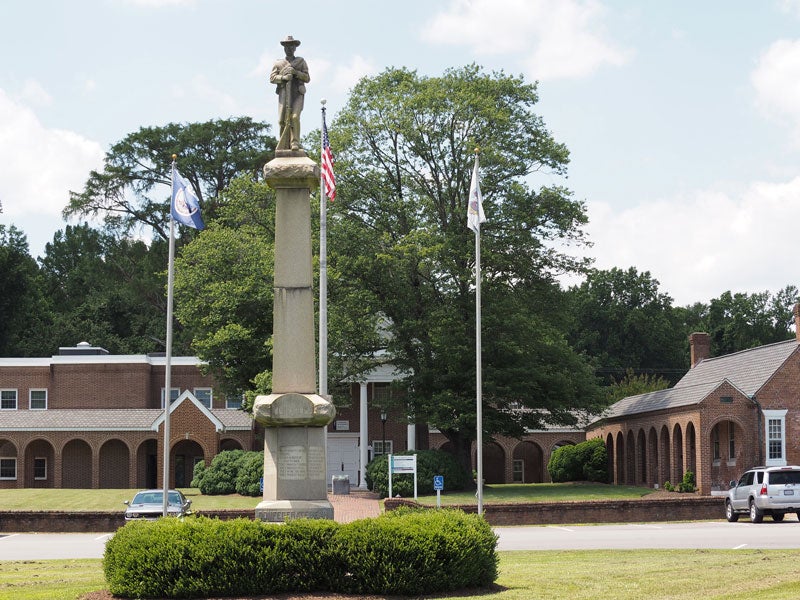Isle of Wight votes to move monument
Published 10:11 pm Thursday, February 18, 2021

- File photo
|
Getting your Trinity Audio player ready...
|
ISLE OF WIGHT
Isle of Wight’s Board of Supervisors voted unanimously Feb. 18 to relocate the Confederate monument that’s stood outside the county’s government complex for the past 115 years.
Where its new home will be and when it will move are still to be determined. Per state law, localities that opt to remove such monuments must offer them for a period of no less than 30 days to battlefields, museums and the like.
The decision comes five months after a Sept. 3, 2020 public hearing on the matter, which drew a nearly even split of speakers for and against removal, and on the heels of a Feb. 9 vote by Windsor’s Town Council rejecting a proposal to move it to the town’s cemetery.
Changes to state law, which took effect July 1 last year, now permit localities to remove, relocate, cover or contextualize any Confederate monuments they own. Since that date, a number of Hampton Roads localities have opted to remove them from public parks, thoroughfares and courthouse grounds.
County residents who had lobbied for the monument’s removal from county grounds, among them local NAACP Chapter President Valerie Butler, argue it glorifies the Confederacy and white supremacy. Others who had lobbied for it to remain where it stands are of the opinion that removing it would be tantamount to erasing history.
“I’m glad it’s over, and I’m glad that the Board of Supervisors made a decision that I feel that’s on the right side of justice,” Butler said, speaking on behalf of the NAACP after the vote. “Wherever they want to relocate it is fine with us as long as it’s removed from the county property.”
Moving the monument to Windsor’s cemetery had been the No. 1 recommendation of an eight-member task force the county had formed last October for the purpose of evaluating potential relocation sites. The group’s second choice had been moving the statue to the village of Walters on land currently owned by task force member Volpe Boykin, who said he’d be willing to grant an easement to any non-governmental organization willing to maintain the monument in perpetuity.
Even if Windsor had agreed to accept the monument, according to County Attorney Bobby Jones, Isle of Wight would still be mandated under state law to solicit proposals from other entities for 30 days. As such, Boykin declined to comment on the likelihood of the monument ending up on his property, stating he’d reserve his remarks for a time after the 30-day window and final Board of Supervisors decision.
“Obviously, government’s supposed to represent the people, and obviously generations change, so does government, in regards to monuments,” said Windsor District Supervisor Joel Acree.
While he acknowledged that he’d been contacted by some who “would like to see it remain” and who have “their own interpretation of why it’s there and what it means to them,” “I don’t want any citizen that I represent to be offended, particularly by items that sit on their property,” he said, referring to the monument’s current location on taxpayer-funded, publicly owned land. “Quite honestly, being born and raised here, I have to confess I never paid much attention to the monument, but it’s been interesting during this course. It’s definitely allowed me to reflect on, just, different parts of it.”
Newport District Supervisor William McCarty, who had suggested during a Feb. 4 work session that “maybe, the government shouldn’t be in the monument business,” expounded that evening on his belief that the best way to ensure the monument is not destroyed on some future date when current board members are no longer in office is to, as Boykin once remarked, move it “off government property and out of government control.”
“Times change; we don’t know what the next 10 years, 20 years ahead of us hold,” McCarty said. “In order to, regardless of what opinion is on historical data, whether we celebrate it or criticize it, the goal — and I think we heard this from the task force — was not to ever destroy anything … I don’t know that you can trust government to protect that which citizens hold dear.”





